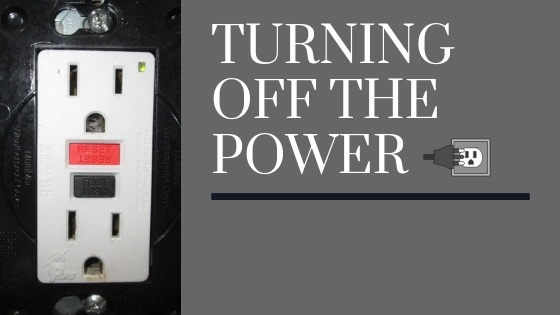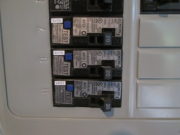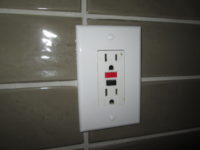
Turning off the Power in your House – AFCI and GFCI Protection
Despite all the gloom and doom, you hear every day; our lives are relatively safe because of advancing technology. One example of this is your house. Modern homes have never been better at keeping the people inside alive.
One of the more important safety features in houses today relates to the electrical system. Arc-Fault Circuit Interruption (AFCI) and Ground-Fault Circuit Interruption (GFCI) are standard in new homes. They can be added to older houses without great cost. These systems monitor the electricity to various places and are designed to cut the power if certain unsafe conditions are detected. While the conditions that cause power to be shut off vary between GFCI and AFCI, the outcome is the same. The power is interrupted, and the risk of a fire or electrocution is drastically reduced.

First, let’s look at AFCI protection. This technology first came along roughly 15 years ago. If AFCI detects excessive arcing within the home’s wiring or when an electrical device is plugged in, the AFCI will cut the power. Arcing within an electrical system often indicates a loose connection and if allowed to continue, a fire can start. AFCI protection is most often accomplished with a circuit breaker in your electric panel. It can often be distinguished from the other circuit breakers by having a “test” button on it.

GFCI protection has been around for nearly 50 years. It is one of the best safety enhancements ever created in residences. You might have noticed GFCI outlets around sinks in bathrooms or kitchens. They usually have two buttons between the outlets. If you look closely, one button should be labeled “test” and the other “reset”.
GFCI outlets monitor the electricity passing through them and if a ground fault is detected, power will be cut immediately. A ground fault is bad because it often means a person has become the path of electricity to the earth. The most common example that we have probably all heard of is holding a toaster while standing in the bathtub. While GFCI protection is most often accomplished via outlets, you will sometimes find a GFCI circuit breaker in your panel box. It will have buttons like the AFCI breakers described above. There are some combination AFCI/GFCI breakers being developed but that technology has not quite trickled into residential homes just yet.
AFCI and GFCI outlets and breakers respond properly when a true hazard exists protecting you and your home. However, have false alarms happen occasionally. Having a basic understanding of AFCI and GFCI protection is good so you can do a little troubleshooting if you ever lose power to parts of your house. Knowing how to reset power at the breakers in the panel or the outlets throughout the house can save a lot of frustration.
Does your home have the best electrical protection? Crawford Inspections can help ensure you and your home are safe. Contact us today!
